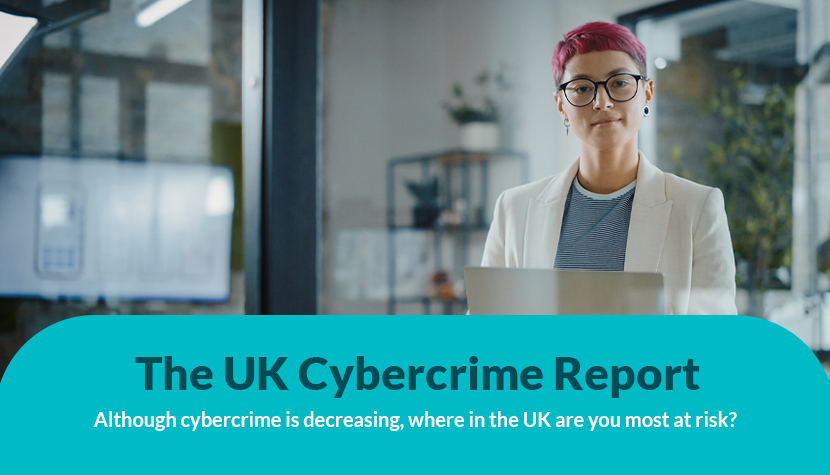
The UK has seen a slight decrease of -2.97% in cybercrime over 2021, but which area of the country are you most at risk of falling victim to one, and how does it compare to last year’s data?
Cybercrime can take many forms, so it's important to understand what constitutes a cybercrime. Hacking for example is any unauthorised act that modifies the contents of a computer with requisite intent and knowledge. This can be in the context of social media and email accounts, servers, computers not connected to servers (personal hacking) with the intent of blackmailing (extortion) or remotely attacking telephone systems (pbx/dial through hacking).
Cybercrimes can also take the form of denial of service attacks, in which a perpetrator prevents an internet service from operating or makes it unavailable to its intended users by bombarding the site with thousands of hits causing it to overload and shut down. This form of cybercrime can also be used as a form of blackmail to extort the site owner.
The releasing of computer viruses, malware and spyware is also a cybercrime, as these computer programmes are designed to disrupt or deny the operation of a computer or to gather information from a computer and pass it to others.
By looking at the worst areas for cybercrime, as well as the percentage increases in these areas, and the most common types of cybercrime the experts here at ESET have established the areas you are most likely to be affected by cybercrime. We have also compared current trends to previous data, to track changes in cybercrime from 2020 onwards.
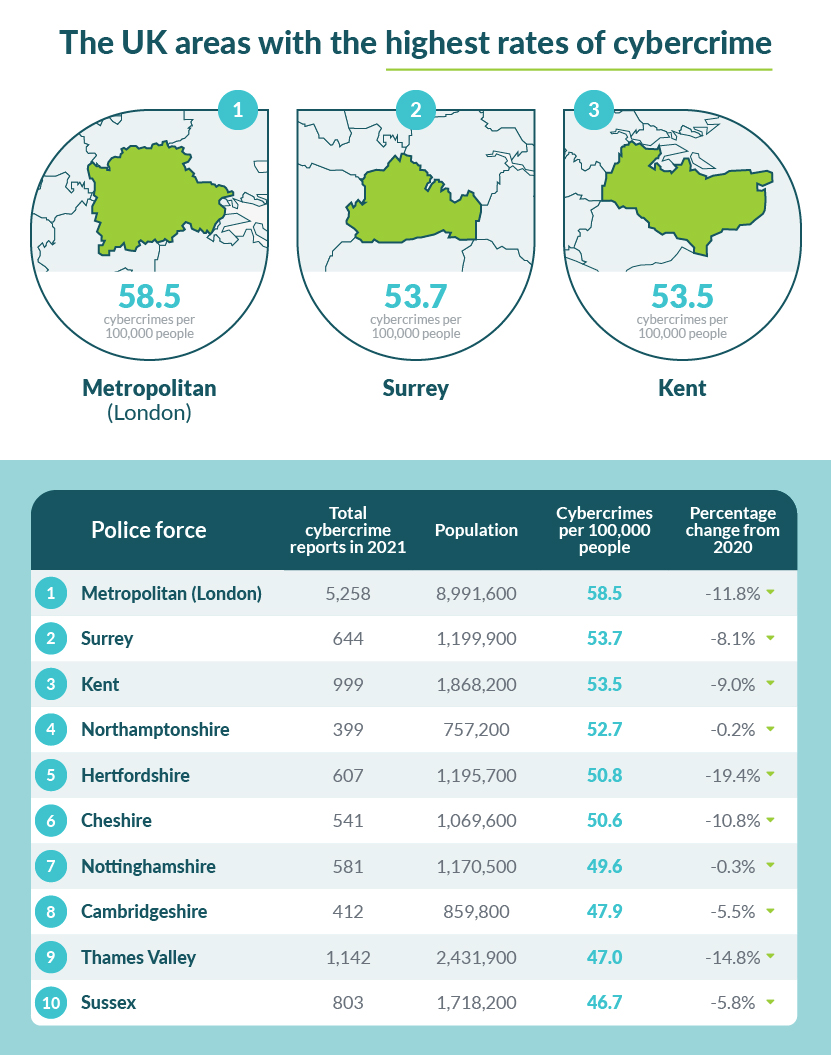
London tops our list with 58.5 victims of cybercrime per 100,000 people. The region also has the highest overall number of cybercrimes in the UK, with 5,258 in 2021 recorded from its population of 8,991,600. Compared to 2020, the cybercrime rate has decreased in London by 11.8%.
Surrey takes second place, rising three places from 2020. The area, with 53.7 cybercrimes per 100,000 people, is also down by 8.1% from year-on-year. Kent comes in third, at 53.5 cybercrime victims per 100,000.
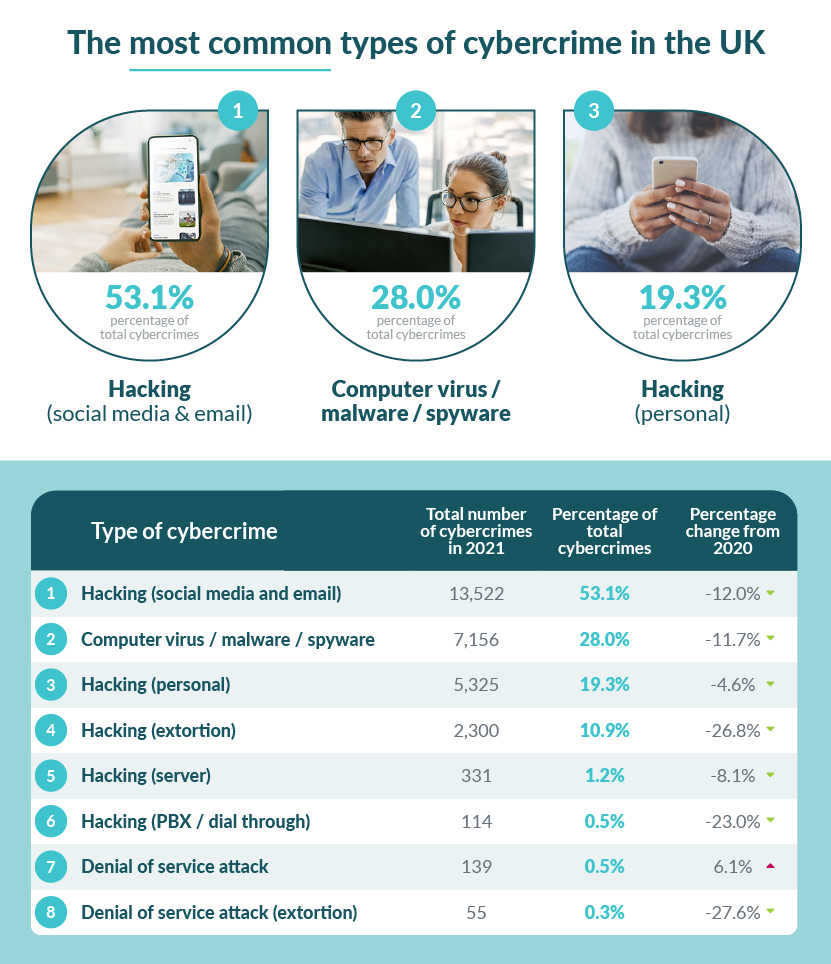
Cybercrimes categorised as hacking made up 85% of the total reported cybercrimes, a 10% increase year on year. Similar to 2020 hacking social media and email accounts made up over half of the reported cybercrimes in 2021, with 13,522 reported victims or 53.1%. The total reported instances of this cybercrime have fallen by 12% from 15,367 in 2020. Computer viruses came second with slightly over a quarter of the total (28%) at 7,156 down 11.7% from last year and personal hacking comes in third place at 5,25 (19.3%) falling by 4.6% year-on-year.
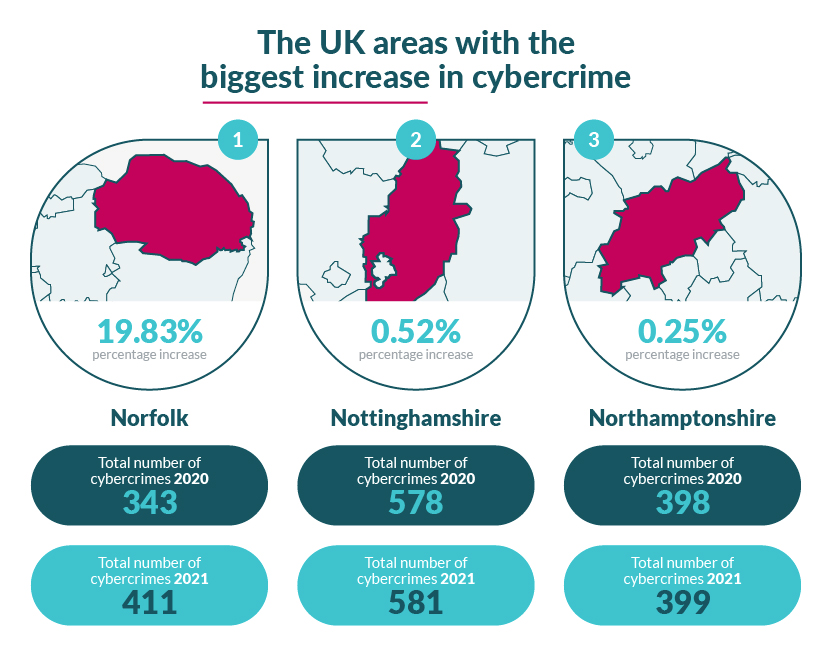
The area with the highest increase in recorded cybercrime is Norfolk, rising by 19.83% between 2020 and 2021 from 343 to 411. Nottinghamshire comes second with cybercrimes increasing from 578 to 581, a marginal increase of 0.52%. Close behind is Northamptonshire, only rising by 1 cybercrime or 0.25%.
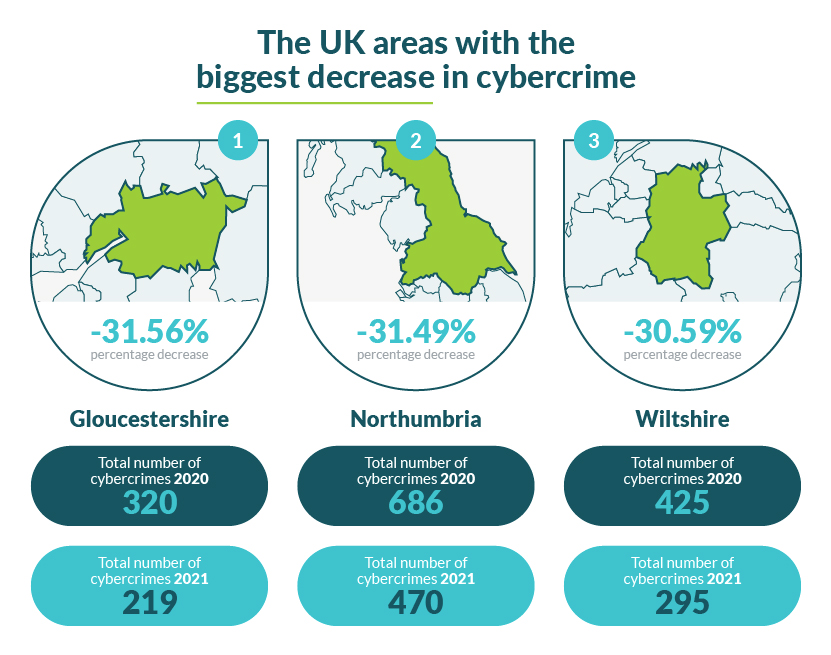
All except three areas on our list saw a reduction in the cybercrime rate. Gloucestershire had the biggest reduction in cybercrime, dropping by over a hundred from 2020 to 2021 meaning a decrease of 31.56%. Cybercrimes in Northumbria also dropped by nearly a third at 31.49% from 686 to 470. Coming third is Wiltshire, dropping from 425 to 295, a decrease of 30.59%.
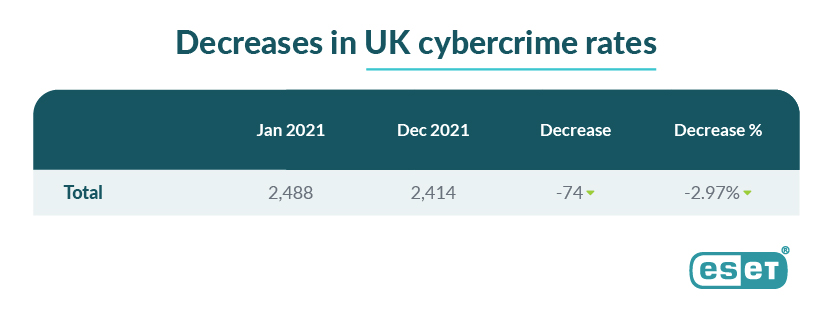
From January to December 2021 there was a slight decrease in cybercrime of 2.97% dropping from 2,488 in January to 2,414 in December, a small decrease of 74 over the last year.
Methodology
The cybercrime data was sourced from the City of London Police’s NFIB Fraud and Cyber Crime Dashboard and refers to crimes committed during 2020 and 2021. The population data was sourced from ONS Crime in England and Wales data.
To calculate the annual increase, data was used from January 2020 to January 2021 and January 2021 to December 2021.
Hacking is defined as any act which causes an unauthorised modification of the contents of any computer with the requisite intent and knowledge. In the context of social media and email, this includes all forms of individual email accounts and all forms of individual social media both personal and for organisations or companies.
In the context of personal hacking, this is the unauthorised modification of the content of any computer that is not a server and applies to any device using operating software accessible online.
Hacking (Server) can be defined as the unauthorised modification of files or services hosted on a server.
Hacking (Extortion) occurs where there is a threat (Blackmail) attached to any computer hacking or threat of computer Hacking.
Hacking in the context of pbx / dial through can be defined as a remote attack on a telephone system with the intent to divert calls to premium rate or overseas numbers to generate profit for the fraudster.
Computer Viruses, malware and spyware are defined as the releasing of a computer program designed to disrupt or deny the operation of a computer or to gather information from a computer and pass it to others.
A denial of service attack can be defined as an attempt to make a computer unavailable to its intended users by preventing an internet site or service from operating by bombarding a site or email address with thousands of hits or mail in order to prevent a serves from being able to operate and deal with genuine business.
Denial of Service Attack (Extortion) occurs when there is blackmail attached to the denial of service attack.
Definitions of cybercrimes taken from Home Office Counting Rules For Recorded Crime.